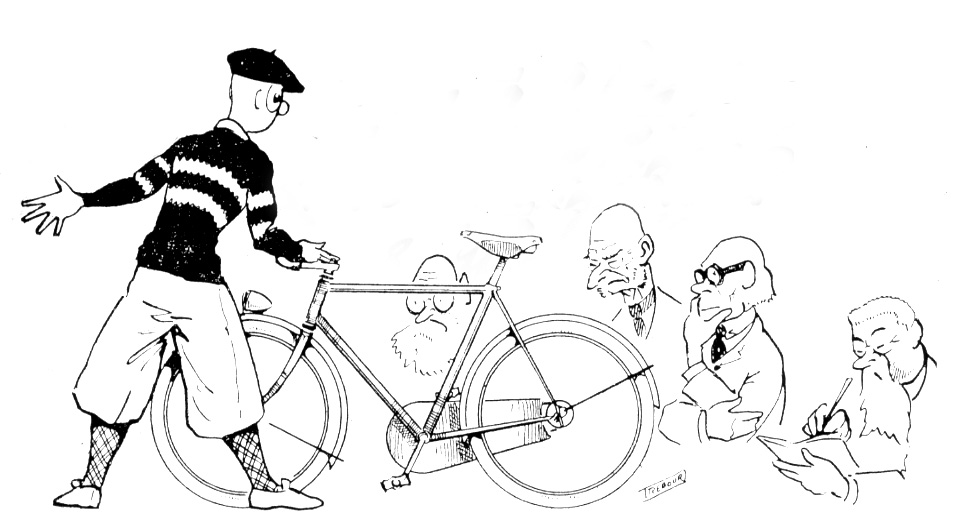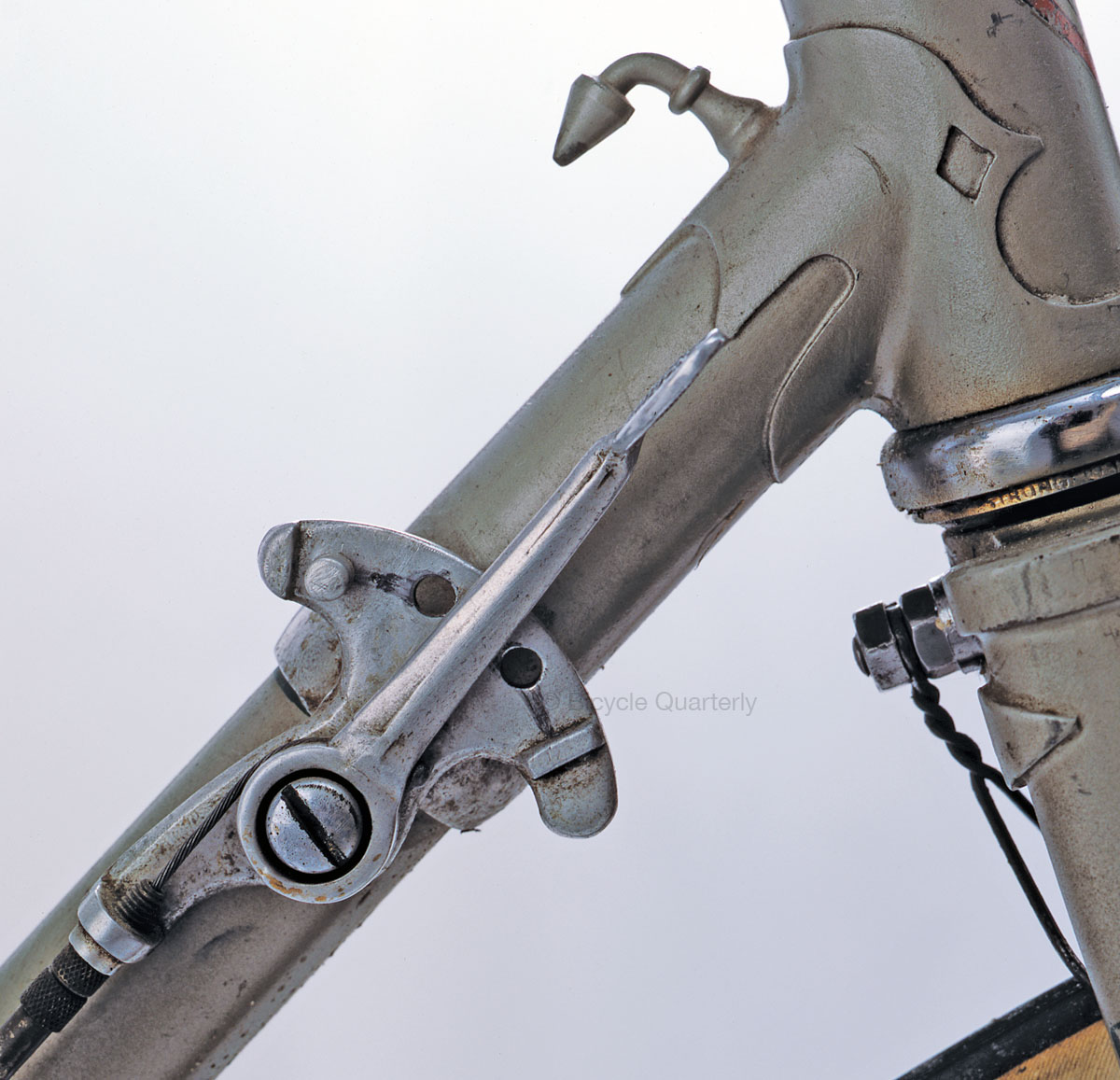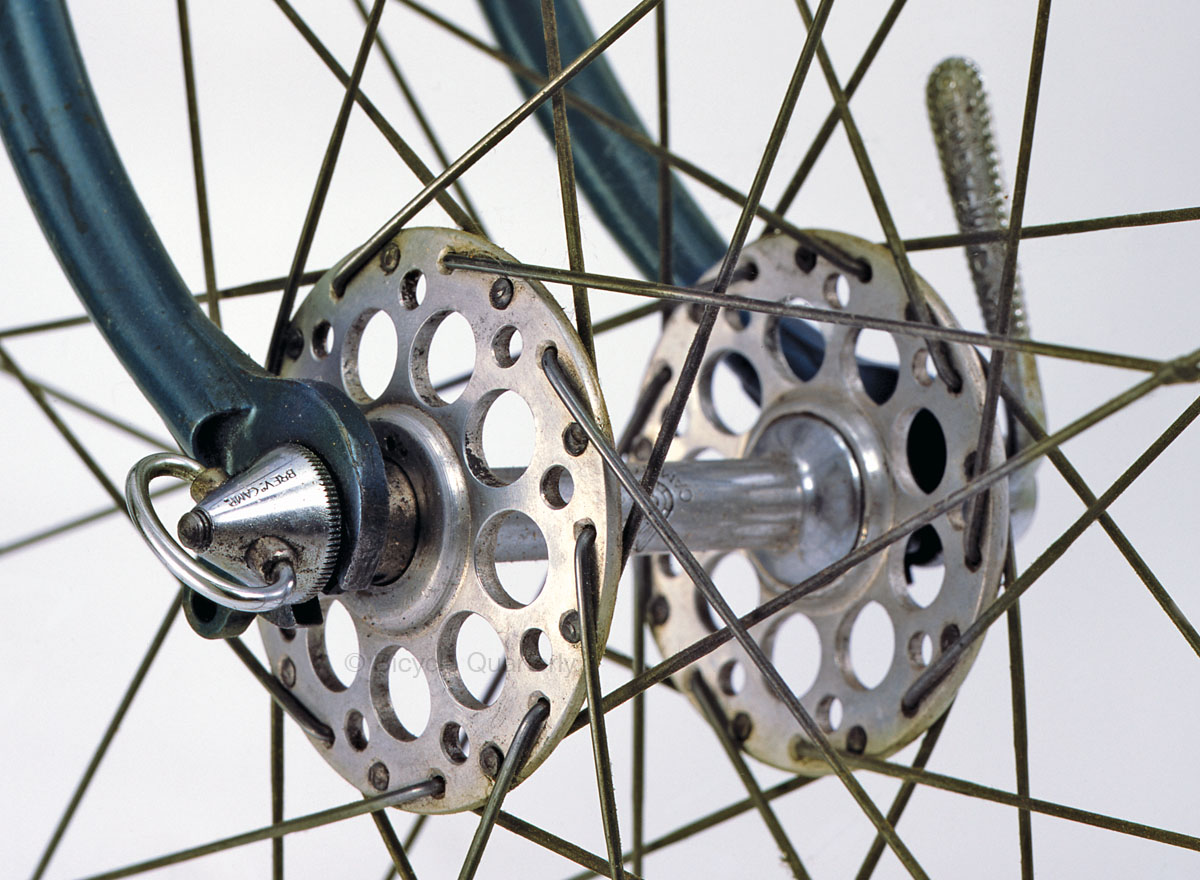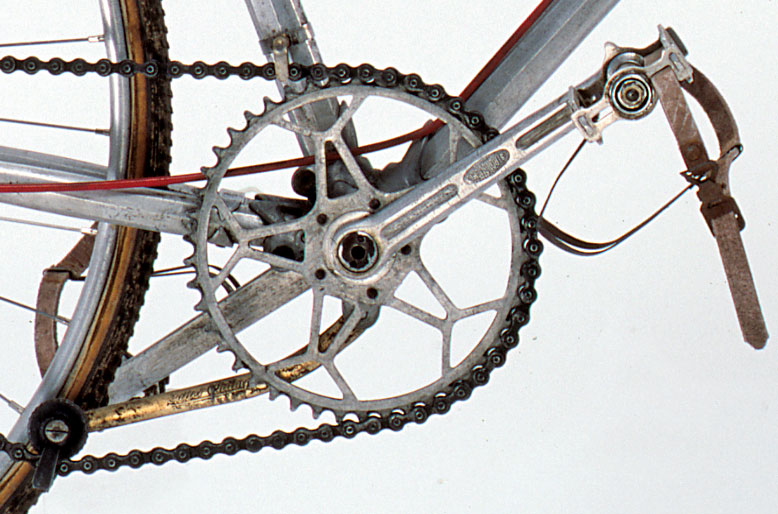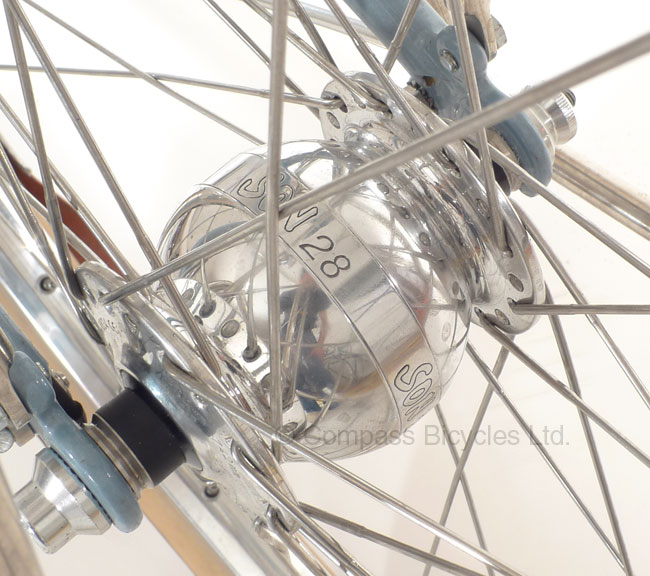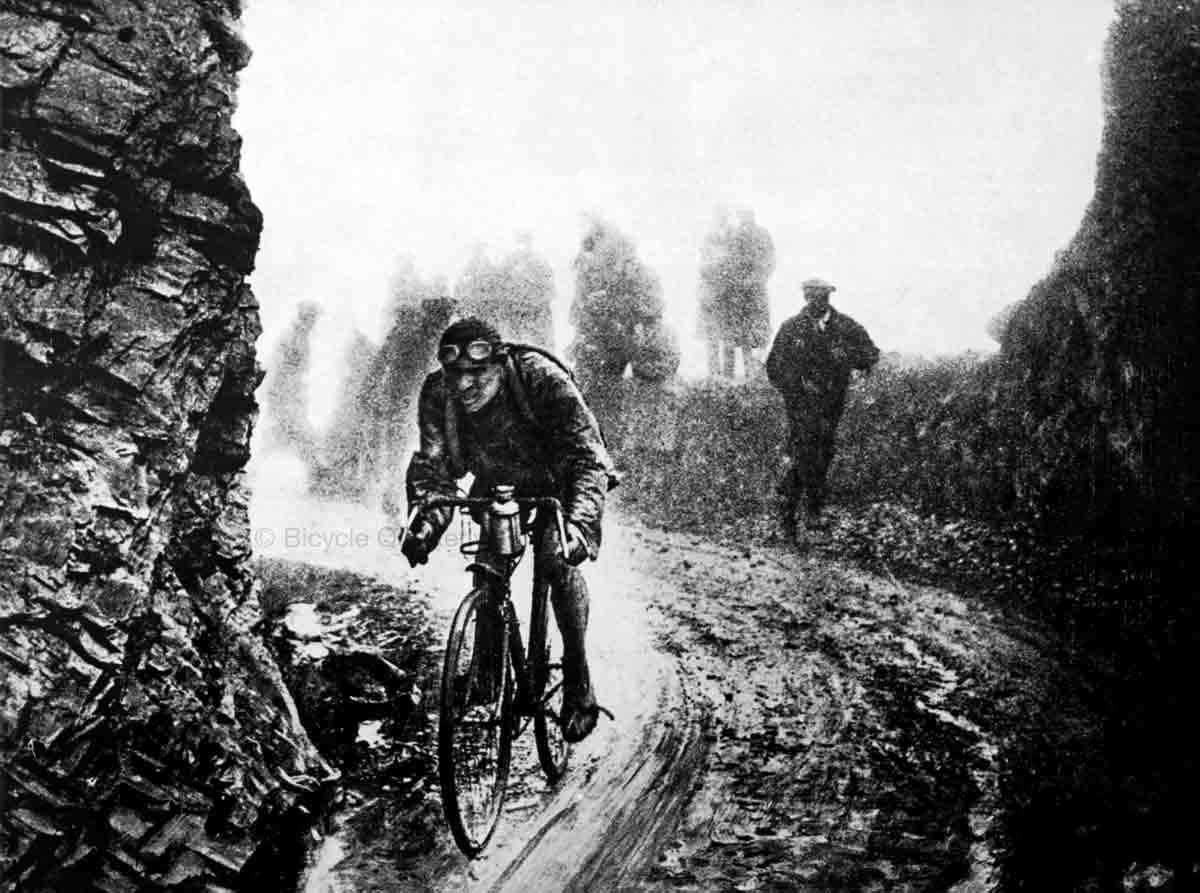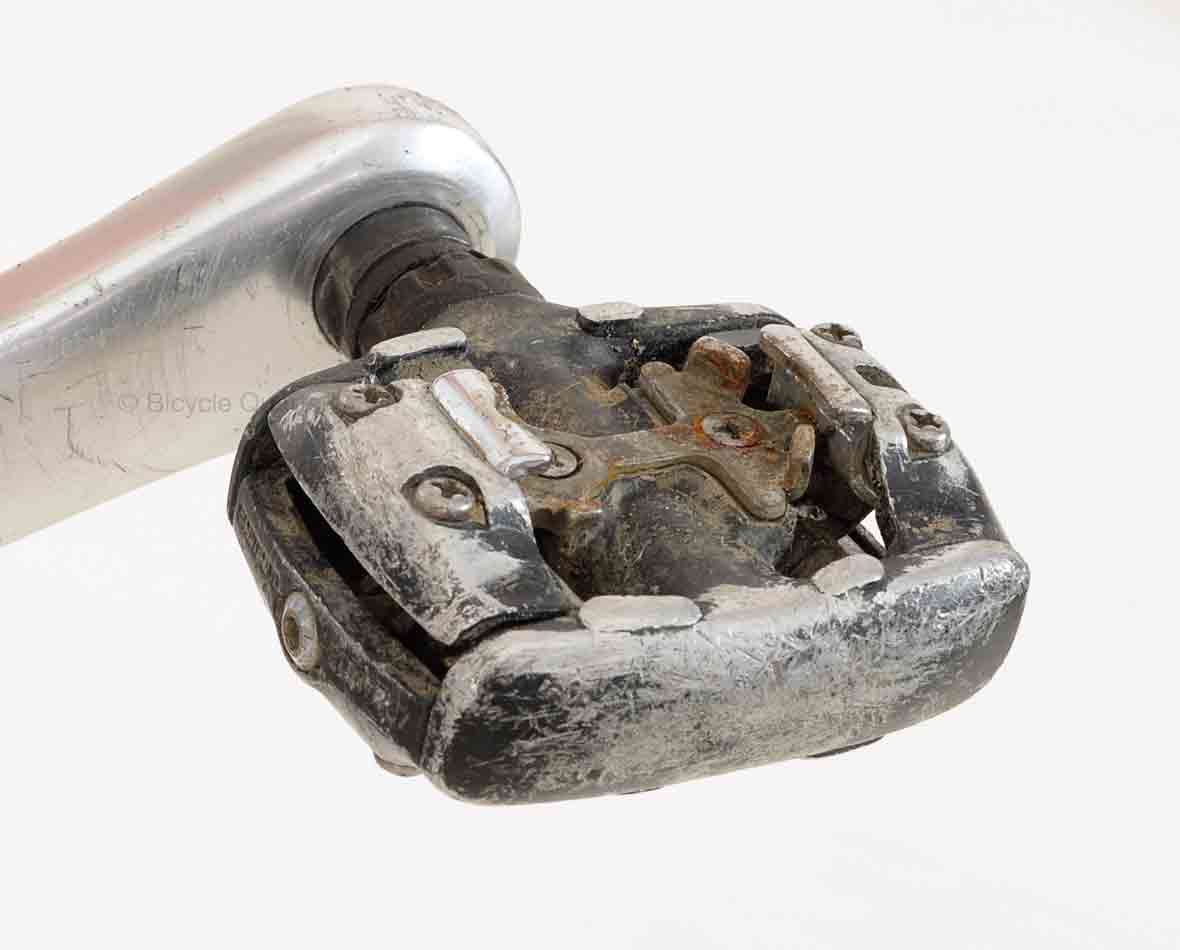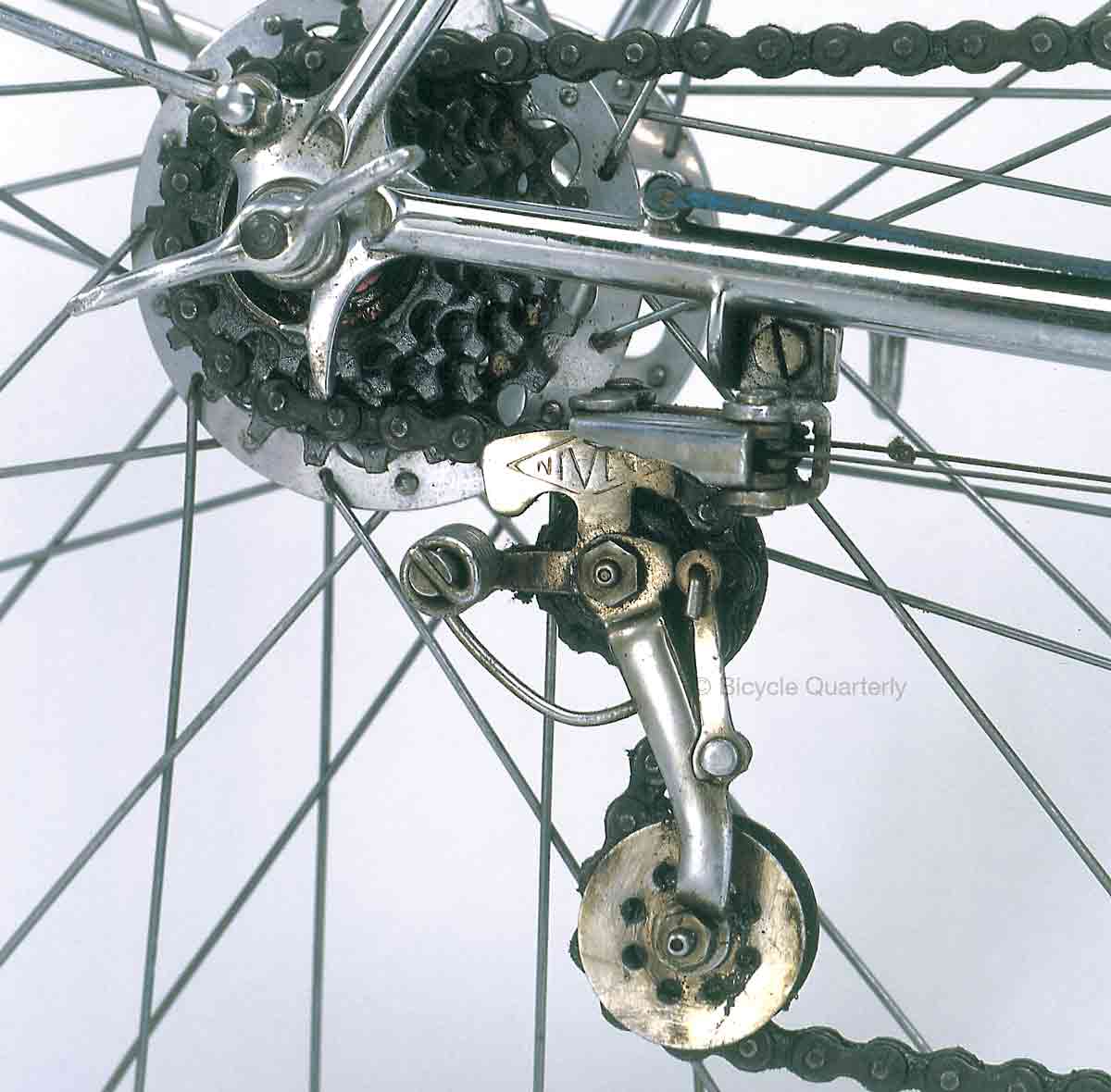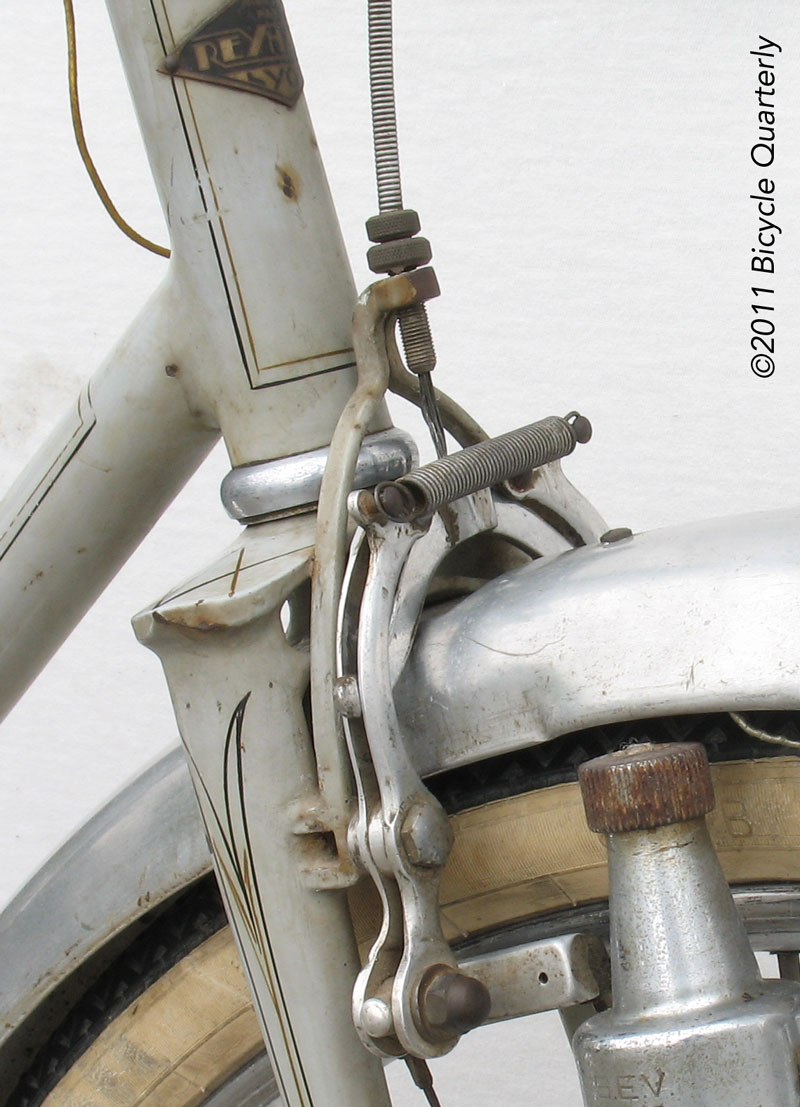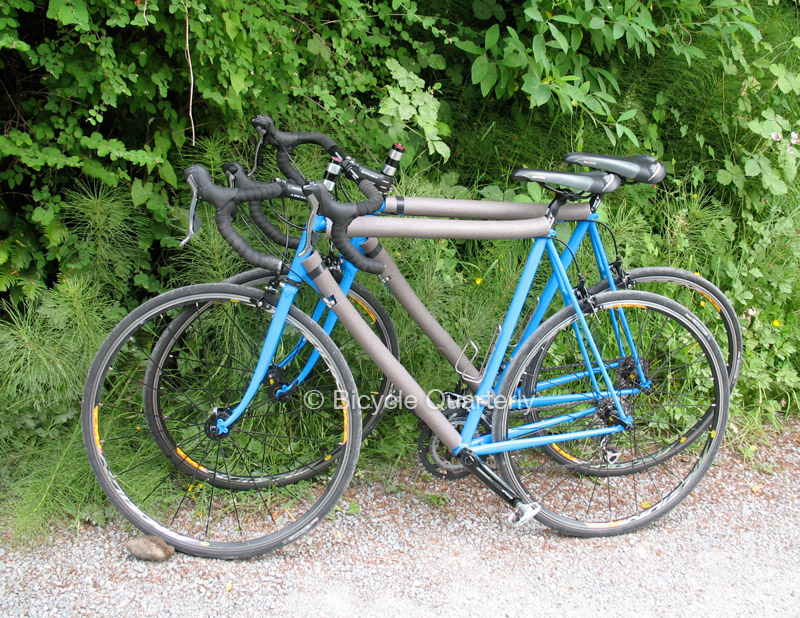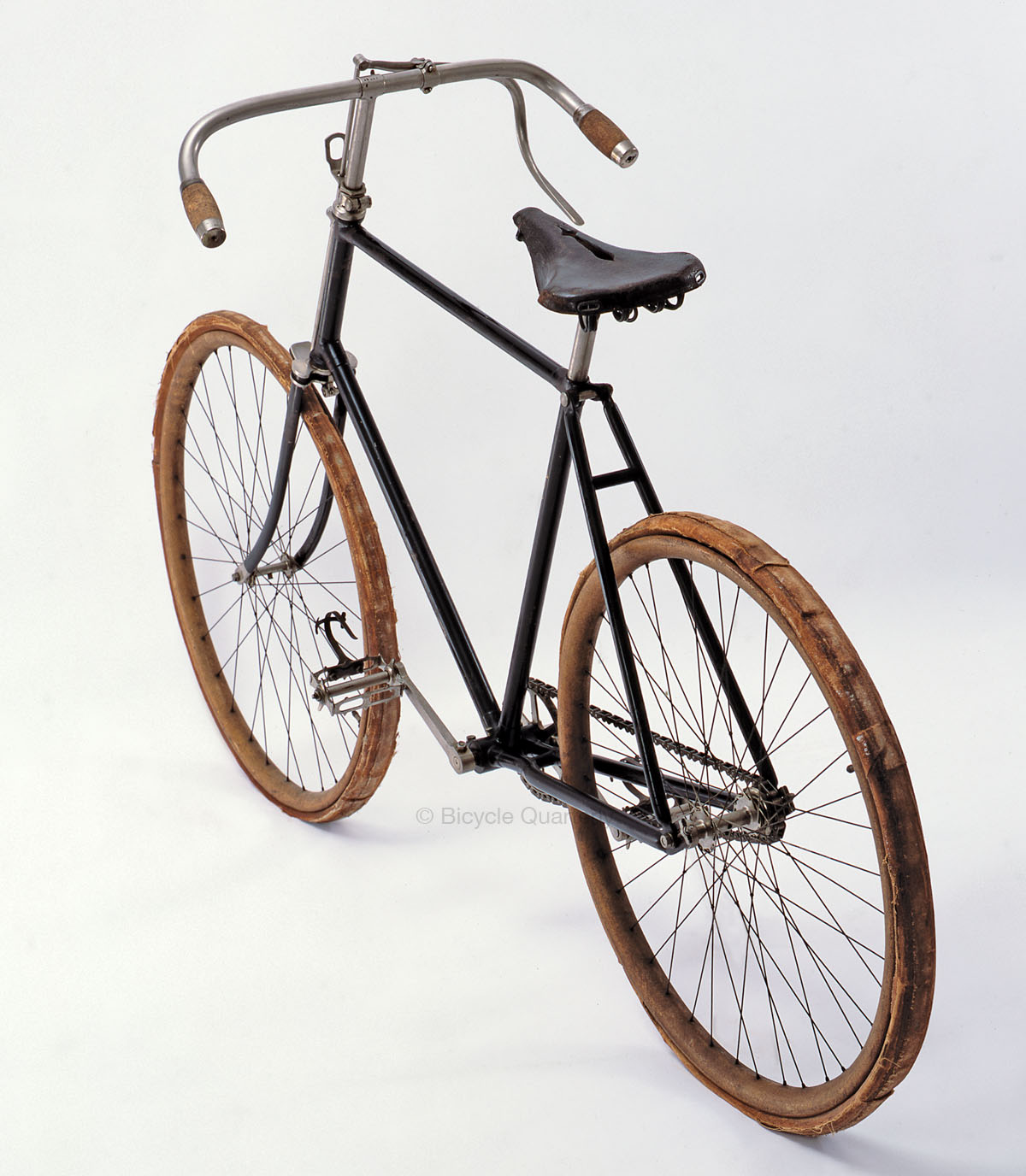10 Most Important Innovations in Cycling
A while back, another magazine published a list of the “10 Most Important Innovations in Cycling”. The list included things like electronic shifting and Lycra, but left out pneumatic tires…
This got us thinking: What are the ten most important innovations in cycling? To keep things straightforward, we’ll start after the invention of the chain-driven “safety bicycle” with two equal-sized wheels – otherwise, the invention of the wheel would be number 1.
10. Indexed shifting has allowed many casual cyclists to enter the magic world of spirited riding on a multi-speed, derailleur-equipped bike. Indexed shifting goes back to the first derailleurs, which were indexed to convince skeptical cyclists that they were easy to use. But it really was Shimano with the 1985 SIS who introduced the idea to the masses. Today, all mainstream bicycles use indexed shifting. (Photo: 1939 Super Champion shift lever)
9. Quick release attaches the wheels more securely than wingnuts, yet makes it easy to remove a wheel in case of a flat tire. Even though Tullio Campagnolo usually is credited with this invention, new research has put this in doubt. No matter; today, most performance bikes are equipped with cam-operated quick releases based on Campagnolo’s design. (Photo: 1950s Campagnolo hub)
8. Aluminum components become possible when high-strength alloys were developed in the 1910s. During the early 1930s, aluminum revolutionized bicycle construction by reducing the weight of rims, cranks, handlebars and most other components. While the wonder material of the moment is carbon fiber, aluminum remains the material of choice for most bicycle components.
(Photo: 193os Stronglight and Caminargent aluminum bicycle)
7. Generator hubs have transformed night-time cycling by providing light at any time, at the flick of a switch. No longer do cyclists have to worry about battery charge, or endure the drag and noise of sidewall dynamos. (To say nothing of the hassles of carbide lamps!)
After many false starts since the 1930s, it was the German maker Schmidt Maschinenbau (SON) who introduced the first generator hub suitable for spirited night-time riding in 1995. Today, generator hubs are replacing sidewall generators on utility bikes throughout the world, and more and more performance bikes are equipped with them as well.
6. Drop handlebars have multiple, ergonomic hand positions that make it possible to ride long distances in comfort. Invented by cyclotourists around the turn of the 20th century, drop bars have persisted, despite many efforts to come up with alternative shapes. Today, all racing bikes use drop bars. (Illustration: Lucien Buysse in the 1926 Tour de France)
5. Clipless pedals for walkable shoes are a development from racers’ clipless pedals. Originally, clipless pedals were sold as safety equipment: they release in a crash. Otherwise, they worked like racing pedals with toeclips and straps. Once clipless pedals became available for shoes you could walk in, they revolutionized cycling.
Intended originally for mountain biking, they were adopted by cyclotourists, commuters, weekend riders and randonneurs as well. No longer did you have to choose between waddling like a duck with cleated shoes, or risk coming out of your toeclips on steep hills and in sprints. Shimano’s SPD system was the first, and it remains the predominant one. (Photo: 1980s Shimano M737 from Bicycle Quarterly.)
4. Derailleurs really made cycling in the mountains not just possible, but enjoyable, with all due respect to hub gears, floating chains and Retro-Directs. It is simply revelatory to be able to select just the right gear with the flick of a lever, without having a heavy hub in the rear change the feel of the bike. The derailleur appears to have been invented in Britain, but it was popularized in France starting in the 1910s. Despite some comebacks from hub gears, derailleurs equip most performance bicycles today. (Photo: 1950 Nivex derailleur)
3. Cable-operated brakes are often overlooked, but we don’t realize that the biggest problem for early mountain cyclists was slowing down. Some cyclists cut down small trees and attached them to their rear triangles, so they dragged on the ground during descents. The first French Technical Trials in 1901 were concerned only with brakes. The cable-operated rim brake showed its superiority back then, and it continues to equip most performance bikes today. (Photo: 1930s Jeay roller-cam brake.)
2. Butted, thinwall frame tubing makes the frame sing, even though the idea of “planing” may not yet be universally accepted. Few people will deny that cycling on a lightweight frame is more fun than on a frame made from “drainpipe”. When thinwall, butted frame tubing became common on racing bikes during the 1930s, Tour de France speeds increased more than at any time in history. Today, butted steel tubing still is competitive against newer materials, and even the latest carbon machines use variable wall thicknesses and diameters to mimic the feel and performance of the best steel frames. (Photo: Bikes for Bicycle Quarterly’s double-blind test of frame tubing.)
1. Pneumatic tires are by far the most important innovation in cycling. Cycling saw many false starts until it finally found enduring popularity in the 1890s. One major reason for the breakthrough were pneumatic tires. No longer did bicycles deserve the name “boneshakers.” The air-filled tires were more comfortable and much faster. Invented in Britain and Ireland (twice!), the invention spread around the world, and today, virtually all bicycles are equipped with pneumatic tires. (Photo: 1894 Humber)
What do you consider the most important innovation in cycling?
Photos from Bicycle Quarterly and The Competition Bicycle.


